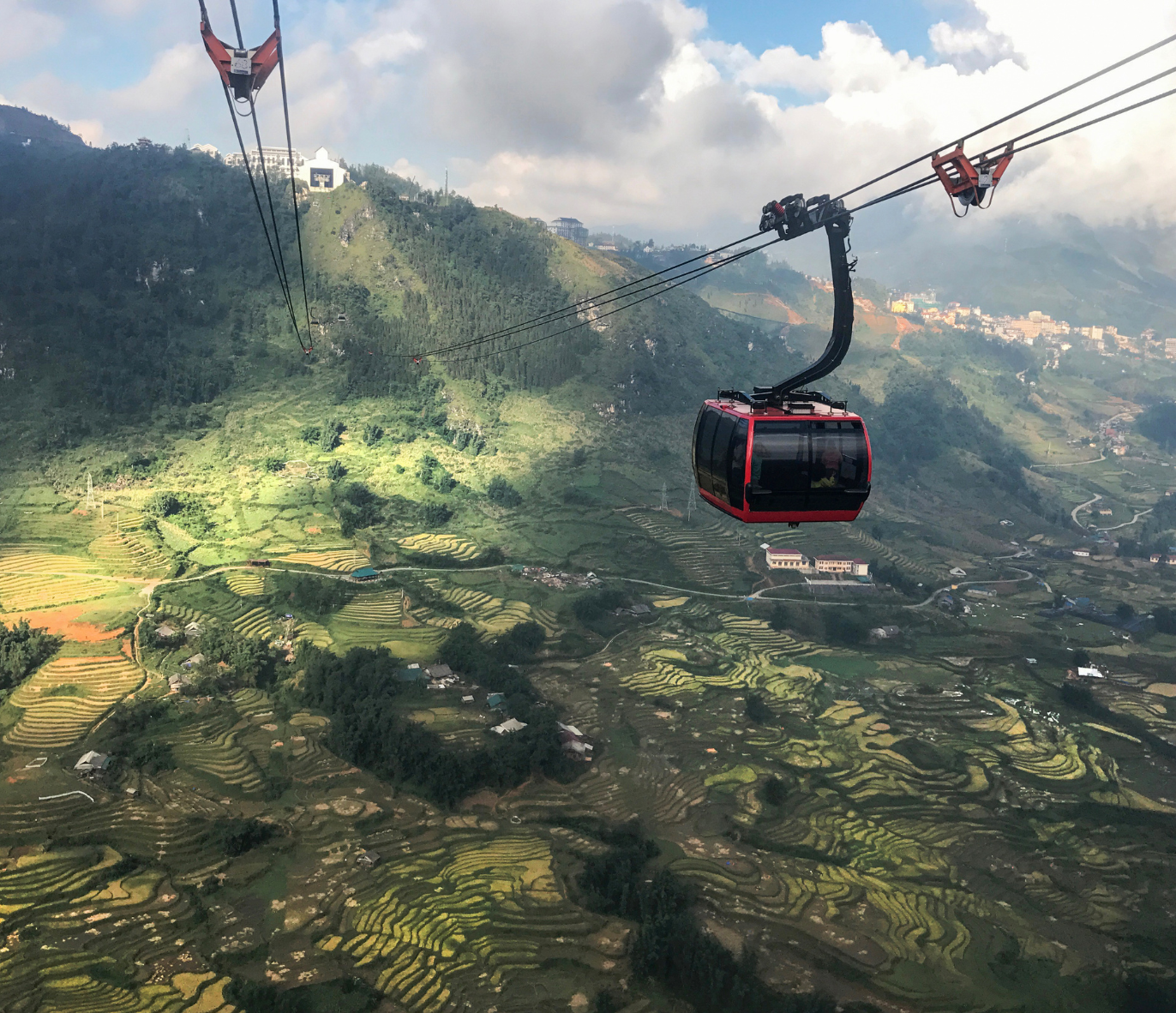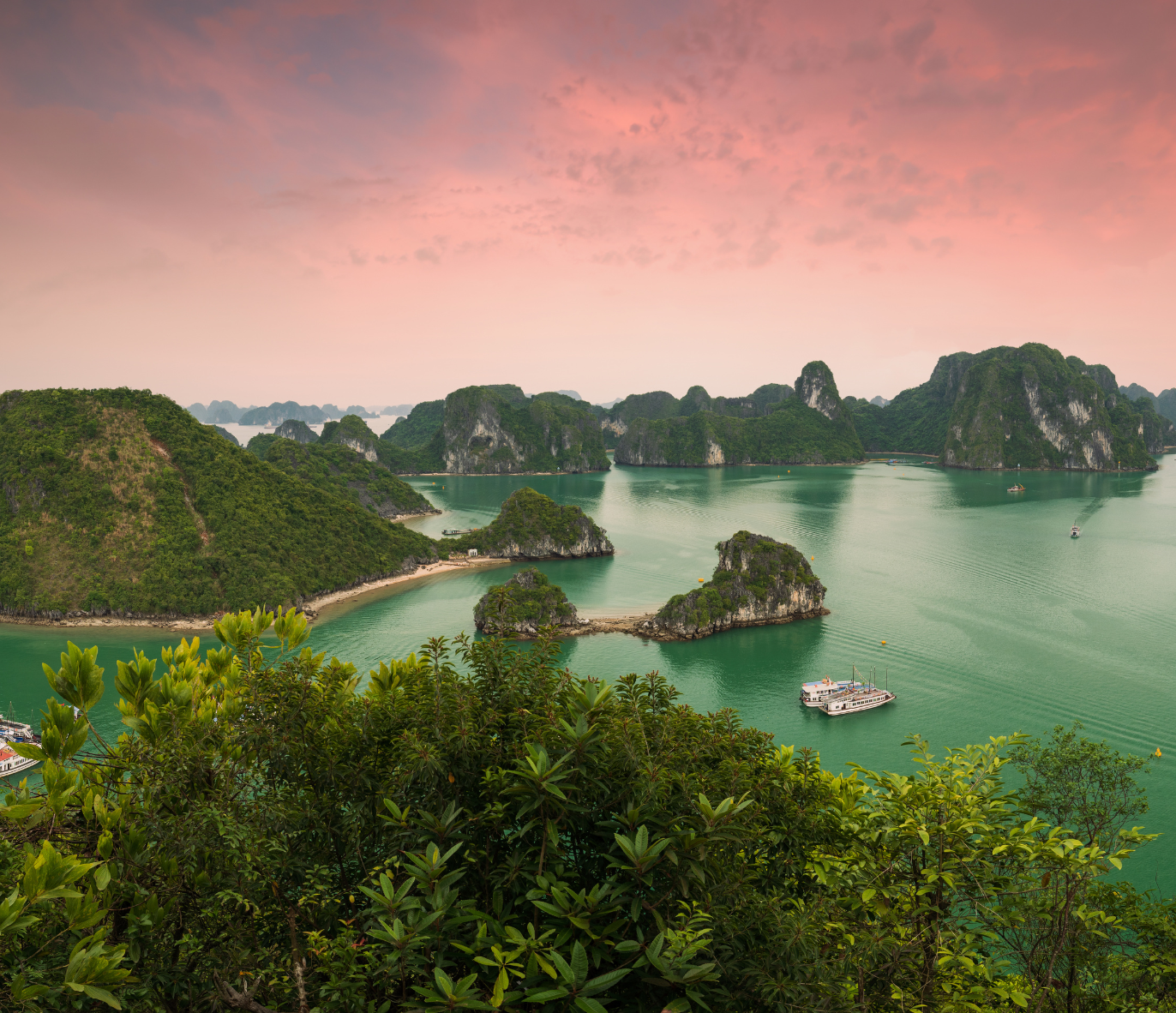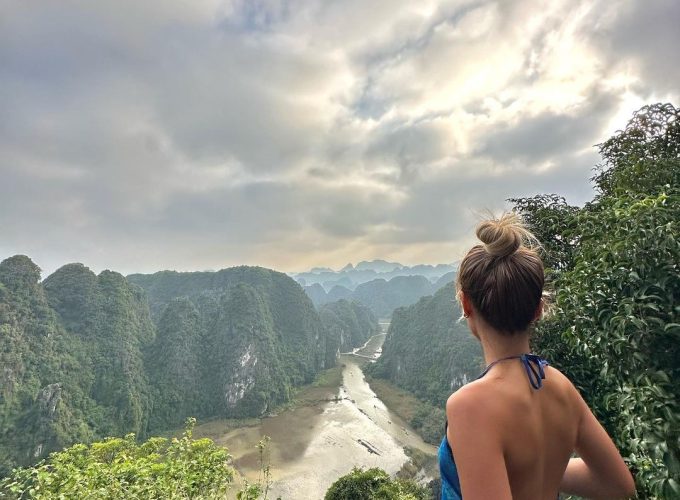Choosing the best time to visit Vietnam depends largely on your preferences and what you hope to experience. Generally, the dry season, spanning from November to April, is considered the best time to visit Vietnam. During this period, the weather is typically dry and comfortable, making it perfect for exploring Vietnam’s vibrant cities, pristine beaches, and lush landscapes. However, if you’re seeking to avoid crowds and enjoy lower prices, the shoulder seasons of May and October offer fewer tourists and still manageable weather. Ultimately, whether you prefer bustling streets or serene landscapes, Vietnam welcomes you year-round with its rich culture and diverse scenery.
Vietnam spans over 1,600 kilometers (1,000 miles) from north to south, resulting in a diverse range of climates from temperate to tropical. This diversity makes Vietnam an attractive destination throughout the year. However, spring, particularly from March to April, is often considered the optimal time to visit the entire country. During this season, the weather is generally delightful with moderate temperatures and minimal rainfall. Conversely, tropical monsoons in other periods can bring heavy rains and sporadic flooding. Additionally, the summer months may bring uncomfortably hot and humid conditions.
When to visit Extreme North of Vietnam (Sapa, Ha Giang, Bac Ha, Mu Cang Chai)
In Sapa and Vietnam’s north-west region, which includes Mu Cang Chai, the climate follows a distinct seasonal pattern. The dry season spans from October to late March, while the wet season extends from April to September. During December and January, temperatures can drop significantly, leading to frosty conditions, especially at night.
For travelers heading to the north-east region, such as Ha Giang, the optimal time to visit is during the dry season from October to April. However, it’s important to note that December and January can still bring chilly temperatures. It’s advisable to avoid traveling to Ha Giang during the rainy season from May to September.
The most favorable trekking conditions in Sapa and surrounding areas typically occur between September and November, as well as from March to May. During these periods, daytime temperatures range from 15-28°C, while nighttime temperatures range from 10-18°C. While trekking and cycling are feasible year-round, the winter months can be cold, and the summer months tend to be wet.

When to visit North Vietnam (Hanoi, Halong Bay, Cuc Phuong, Mai Chau & Ninh Binh)
Hanoi and Northern Vietnam exhibit clear distinctions between their winter and summer seasons. The winter period, extending from November to April, is characterised by cool temperatures, typically ranging from 17 to 22°C, and mostly dry conditions. The coldest months are usually from January to March.
Conversely, summer spans from May to October, marked by hot and humid weather, along with the highest levels of rainfall in the region. July to September typically experience the most precipitation. Although rare, severe weather during these months can occasionally disrupt sailing activities in Halong Bay, primarily due to safety concerns.

When to visit Central Vietnam (Hoi An, Danang, Hue, Dalat, Quy Nhon & Nha Trang)
In the central region of Vietnam, including Hoi An, Hue, and Danang, the climate is predominantly hot and dry from mid-January to late August, often with temperatures soaring into the mid-30s °C. However, as winter approaches, rainfall gradually increases, reaching its peak levels in October and November, occasionally accompanied by typhoons.
Hue tends to be cooler than Hoi An, particularly in the early months of the year. Additionally, due to their locations on opposite sides of a small mountain range, the weather in these two cities can vary significantly on any given day.
About a six-hour drive south of Hoi An lies Quy Nhon, which shares a similar weather pattern but boasts a slightly longer dry season due to its proximity to the southern system.
Nha Trang, located at the southern end of Central Vietnam, experiences a more extended dry season typically from January to September, characterized by high temperatures and minimal rainfall. However, from October to early December, the region enters its rainy season, with nearly half of the annual rainfall occurring during October and November.
In the central highlands, Dalat encounters wet conditions from June to October, which can hinder outdoor activities. From November to May, the area experiences drier weather, although December and January can be chilly.

When to visit South Vietnam (Ho Chi Minh City, The Mekong Delta, Phu Quoc & Con Dao, Phan Thiet & Mui Ne, Ho Tram & Long Hai)
The southern region of Vietnam experiences a climate characterized by consistent temperatures throughout the year, dividing into two distinct seasons: wet and dry.
The dry season typically spans from November to April or early May, with temperatures remaining relatively stable. Late February to May tends to be slightly hotter and more humid compared to other months. Conversely, the wet season extends from May to early November, with June, July, and August witnessing the highest levels of rainfall. Rain during the wet season is often intense but brief, frequently occurring in heavy mid-afternoon downpours.
Average temperatures in the southern region range between 25°C to 35°C year-round.
In the far south, islands such as Phu Quoc and Con Dao offer enjoyable conditions throughout the year, featuring high probabilities of sunny days. However, visitors should anticipate afternoon downpours if traveling outside the dry season.






Comment (0)